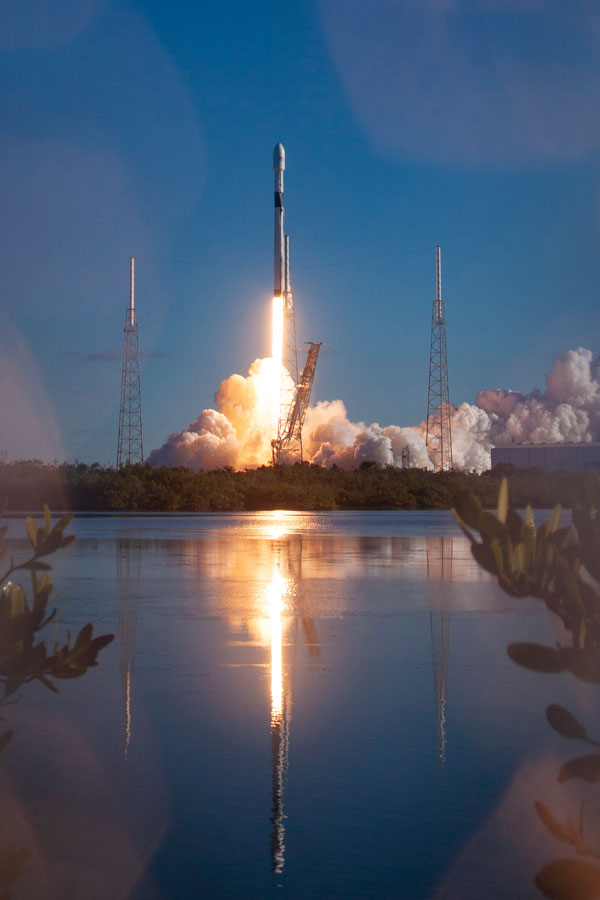
Nuclear detonation detection payload launches
The first two launches of Global Burst Detector III, the latest nuclear detonation detection system, occurred on Dec. 23, 2018, and Aug. 22, 2019. Launched aboard a GPS satellite, the GBD payloads, built by Sandia and Los Alamos national laboratories, look for nuclear detonations around the world, offering real-time information about potential activity to U.S. decision makers. Six additional GBD III payloads are scheduled to be launched over the next several years in support of the U.S. Nuclear Detonation Detection System. (6000)
Counter-Unmanned Aerial System installed
Sandia completed several significant physical security enhancement efforts in FY19, including installation of the first counter-UAS at an NNSA site. This has led to additional tasking from NNSA to install counter-UAS systems at three additional sites. Sandia’s counter-UAS work is part of its Physical Security Center of Excellence, which supports DOE and DoD in ensuring the security of the nation’s nuclear arsenal and special nuclear materials. (6000)
Global Burst Detector advances
Sandia executed an aggressive schedule to develop the next-generation GBD payloads for the U.S. Nuclear Detonation Detection System GBD IIIF program. This included completing Engineering Unit 1 testing, supporting all system tests and completing critical design review. GBD IIIF is the follow-on to the GBD III program; the first IIIF satellite payloads are scheduled to launch in 2025. (6000)
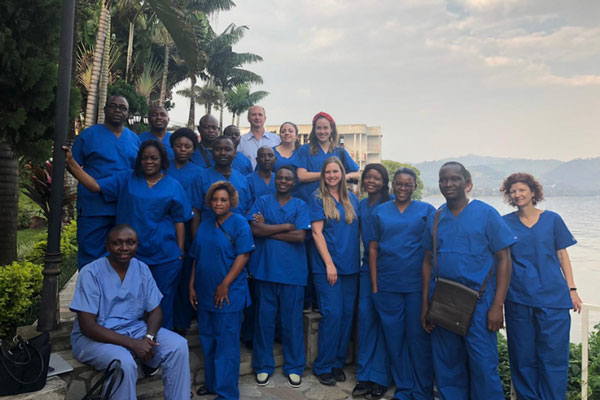
Enhanced Ebola diagnostic lab security
Sandia personnel provided biosecurity subject matter expertise and training for laboratory personnel at the Democratic Republic of Congo’s Institut National de Recherche Biomédicale to help secure Ebola patient samples at the research facility and at regional Ebola diagnostic labs. The purpose of this work, conducted during separate engagements in March and June 2019, is to increase the INRB’s biosecurity capabilities to secure its Ebola outbreak-related samples. (6000)
Biometric security device collaboration
Sandia signed a Cooperative Research and Development Agreement in July with Albuquerque-based Aquila Inc. to develop and test a biometric security system based on the human heartbeat. The technology uses unique electrocardiogram signals streamed in real time from a wearable device to identify a person for security purposes. Sandia will apply expertise in security systems and testing facilities to emulate real-world characteristics in testing access-control prototypes. (6000, 1000)
Materials visually reveal tampering
Sandia researchers have designed and developed tamper-indicating materials that could be used in treaty verification. Called “bleeding materials,” the materials change color upon mechanical damage, alerting users that an area may have been breached. These materials would allow inspectors to realize penetration of a material simply by looking at a tamper indicating enclosure. Most traditional methods rely on time-consuming examinations by inspectors or use of cameras or other equipment. (6000)
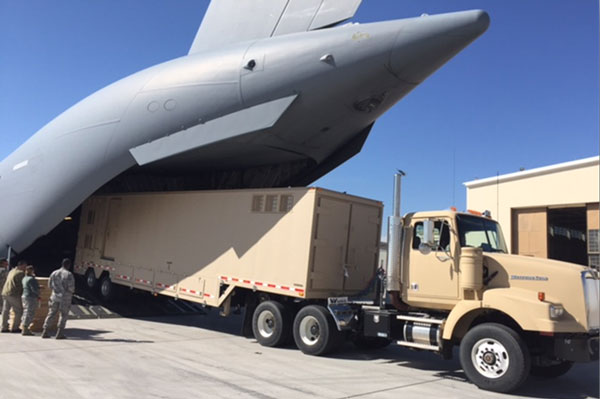
Mobile detonation detection system
Sandia delivered the final Universal Ground Nuclear Detonation Detection System Terminal to the U.S. Air Force, completing a 13-year effort. Sandia designed, developed and performed acceptance testing for UGNT, a mobile ground system for monitoring above-ground nuclear detonations. This system provides data processing for NNSA’s space-based nuclear detonation detection payloads. (6000)
Predicting performance of energetic tools
Sandia’s nuclear threat sciences organization, partnering with the advanced simulation and computing program, has developed a capability to predict the performance of as-built energetic tools. The capability leverages high-fidelity computerized tomography scans as input for hydrodynamic models, allowing irregularities like voids created by the manufacturing process to be quantified and simulated. Previously, individual tool performance envelopes have been based on historical knowledge and lot sampling; this new capability assesses each tool at each life-cycle stage. This advancement enables high-confidence performance predictions for high-consequence applications. (6000)
Mobile Guardian Transporter Prototype 1
Members of the transportation safety and security program successfully completed assembly of the first Mobile Guardian Transporter prototype, achieving a major milestone for Sandia and NNSA’s Office of Secure Transportation in support of the mission to ensure safe and secure over-the-road transportation of nuclear deterrence assets for the coming decades. This major development unit is undergoing a variety of operational and environments testing that will conclude with a crash test planned for the summer of 2020. (6000)
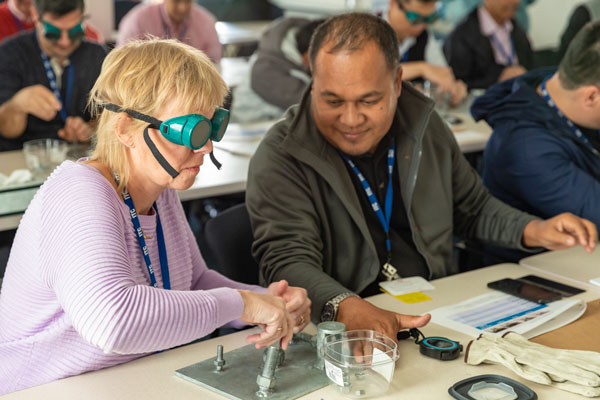
Nuclear physical security training course
The 28th International Training Course on the Physical Protection of Nuclear Materials and Nuclear Facilities was held Oct. 28-Nov. 15, 2019, at Sandia’s Integrated Security Facility. About 60 students from 40 countries participated in the course, which is the International Atomic Energy Agency’s flagship nuclear physical protection advanced training course. Sandia developed and implemented ITC28 in coordination with IAEA and NNSA. Subject matter experts from Sandia and other U.S. labs provided technical guidance on physical protection of nuclear material and facilities, technology demonstrations and hands-on exercises. (6000)
W?W?Ha-2019 workshop and hackathon
W?W?Ha-2019, the first annual DOE workflow workshop and hackathon, was hosted at Sandia’s Livermore Valley Open Campus on March 19-22, 2019. Fifty researchers and practitioners from eight DOE labs and the French Alternative Energies and Atomic Energy Commission (CEA) attended talks on a range of simulation process and data management topics. A series of hackathons was held over two additional days, during which practitioners worked with the developers of a variety of workflow tools, getting hands-on experience with the SPDM capabilities represented. A second annual workshop is scheduled for March 2020. The 2019 event led to increased collaboration across the DOE labs and with CEA. Representatives of the U.K. Atomic Weapons Establishment and vendors have asked to participate in the 2020 event, leading to the establishment of a community of practice. (8000)
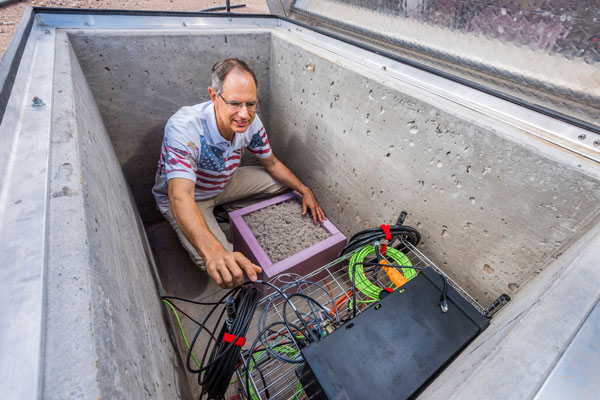
Improving seismic detection accuracy
Sandia developed an algorithm that automatically adjusts detection settings from sensors in a network to better detect earthquakes and explosions and tune out common sounds such as traffic and footsteps. In a Laboratory Directed Research and Development-funded project, researchers used seismic data from dormant Antarctica volcano Mt. Erebus to test the software, achieving 18% fewer false detections and 11% fewer missed detections than the sensors’ original performance. The software ensures that sensors detect unusual seismic activity as distinct from regular activity for accurate detection rates. Accurate detection rates are important because sensor networks generate a lot of data, but only a small percentage of the data, used to verify compliance with treaties, can be analyzed due to the volume. (6000)
Detecting underground explosions for global monitoring
A Sandia team, working with researchers from across the Nuclear Security Enterprise, concluded nine years of field experiments to improve the nation’s ability to differentiate earthquakes from underground explosions and advance U.S. global monitoring capabilities. Sponsored by NNSA, the source physics experiments were a series of underground chemical high-explosive detonations at various yields and depths to improve understanding of seismic activity around the globe. Three underground chemical explosions were conducted in FY19, with the final test occurring in June. (6000, 8000)
DoD accreditation for security simulation software
DoD accredited Sandia’s Dante software for use in DoD physical security studies. Dante is combat simulation software used to inform decision makers and response forces on the effectiveness of existing and future security systems and policy. The software has been used to quantify the impact of new protection concepts employed at multiple high-value facilities. (6000)